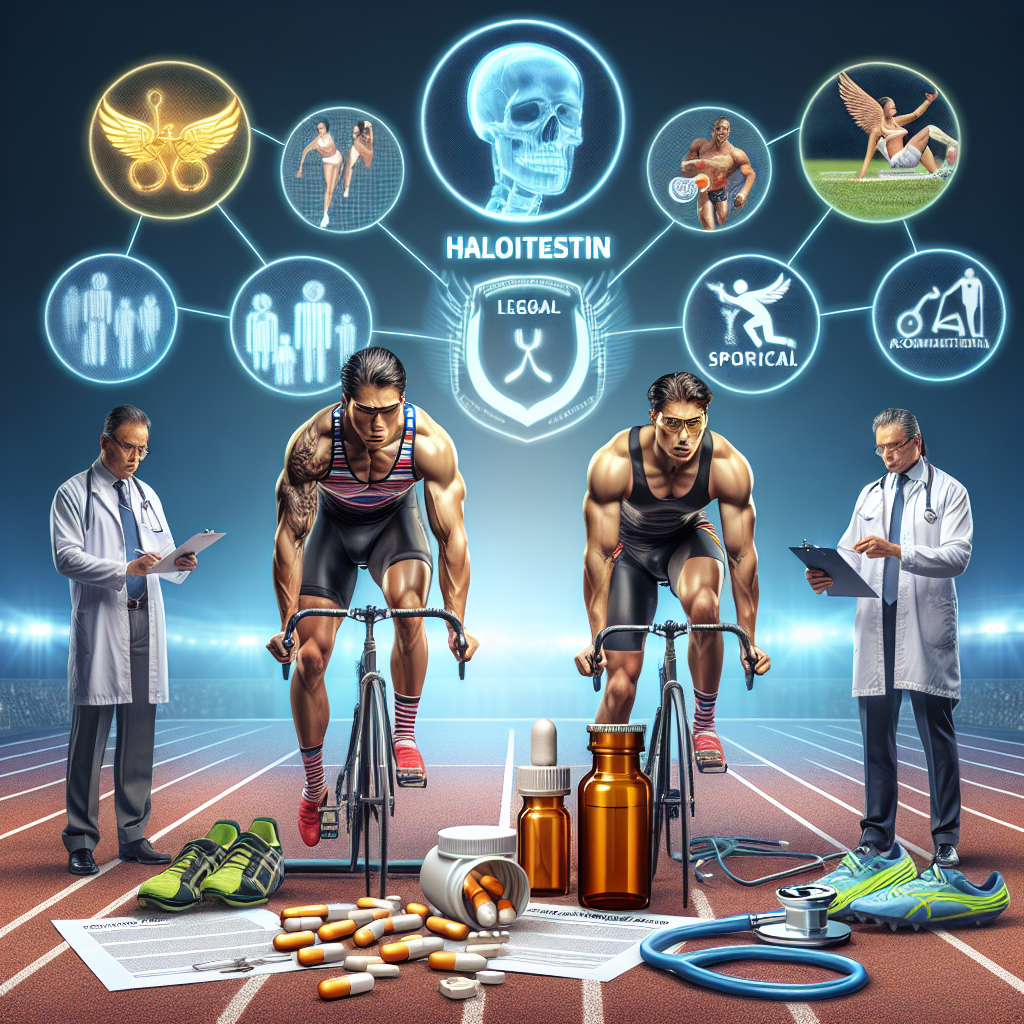-
Table of Contents
The Legal Use of Halotestin in Professional Athletes
Professional athletes are constantly seeking ways to improve their performance and gain a competitive edge. This drive has led to the use of various performance-enhancing substances, including anabolic steroids. One such steroid that has gained popularity among professional athletes is halotestin. However, the use of halotestin in sports has been a controversial topic, with many questioning its legality and potential risks. In this article, we will explore the legal use of halotestin in professional athletes and provide evidence-based information on its pharmacokinetics and pharmacodynamics.
The Basics of Halotestin
Halotestin, also known as fluoxymesterone, is a synthetic derivative of testosterone. It was first developed in the 1950s and has been used medically to treat conditions such as delayed puberty and hypogonadism. However, its use in sports is primarily for its anabolic and androgenic effects, which can lead to increased muscle mass, strength, and aggression.
Halotestin is classified as a Schedule III controlled substance by the United States Drug Enforcement Administration (DEA), meaning it has a potential for abuse and dependence. As such, its use is strictly regulated and requires a prescription from a licensed physician. In sports, halotestin is banned by most major sporting organizations, including the World Anti-Doping Agency (WADA) and the International Olympic Committee (IOC).
Pharmacokinetics of Halotestin
Halotestin is available in oral form and is rapidly absorbed in the gastrointestinal tract. It has a short half-life of approximately 9 hours, meaning it is quickly metabolized and eliminated from the body. This short half-life is one of the reasons why halotestin is preferred by athletes, as it allows for a shorter detection window compared to other steroids.
Halotestin is primarily metabolized in the liver, where it undergoes hydroxylation and conjugation before being excreted in the urine. The metabolites of halotestin can be detected in urine for up to 2 weeks after a single dose, making it difficult to use for doping purposes.
Pharmacodynamics of Halotestin
The anabolic effects of halotestin are due to its ability to bind to androgen receptors in muscle cells, leading to increased protein synthesis and muscle growth. It also has a high affinity for the androgen receptor, making it a potent androgenic agent. This can result in increased aggression and competitiveness, which can be beneficial for athletes in certain sports.
However, the androgenic effects of halotestin can also lead to unwanted side effects, such as acne, hair loss, and virilization in women. It can also have negative effects on cholesterol levels, potentially increasing the risk of cardiovascular disease. These risks highlight the importance of using halotestin under medical supervision and within recommended doses.
Legal Use of Halotestin in Professional Athletes
As mentioned earlier, halotestin is a controlled substance and is banned by most sporting organizations. However, there are some instances where its use may be allowed under medical supervision. For example, in the United States, the DEA allows for the use of halotestin in the treatment of certain medical conditions, such as delayed puberty and breast cancer in women. In these cases, the use of halotestin is strictly monitored and regulated.
In sports, the use of halotestin may be allowed under a Therapeutic Use Exemption (TUE) if an athlete has a legitimate medical need for the drug. This exemption must be approved by the appropriate governing body and is subject to strict regulations and monitoring. For example, an athlete with a diagnosed testosterone deficiency may be granted a TUE for halotestin to treat their condition.
Real-World Examples
One notable example of the legal use of halotestin in professional sports is the case of former NFL player, Lyle Alzado. Alzado was granted a TUE for halotestin to treat a pituitary gland disorder. However, he later admitted to using the drug for performance-enhancing purposes and became an advocate for stricter drug testing in sports.
Another example is the case of former MLB player, Mark McGwire, who was granted a TUE for the use of androstenedione, a precursor to testosterone. While not the same as halotestin, this case highlights the importance of proper regulation and monitoring of TUEs to prevent the abuse of performance-enhancing substances.
Expert Opinion
According to Dr. Gary Wadler, a leading expert in sports pharmacology, the use of halotestin in sports is a serious concern. He states, “Halotestin is a powerful and potentially dangerous drug that has no place in sports. Its use can lead to serious health consequences and is a violation of the spirit of fair play in sports.”
Dr. Wadler also emphasizes the importance of proper regulation and monitoring of TUEs to prevent the abuse of halotestin and other performance-enhancing substances. He states, “TUEs should only be granted in cases of legitimate medical need and should be closely monitored to ensure they are not being used for doping purposes.”
Conclusion
The legal use of halotestin in professional athletes is a complex and controversial topic. While it is a controlled substance and banned by most sporting organizations, there are instances where its use may be allowed under medical supervision. However, the potential risks and negative effects of halotestin highlight the importance of proper regulation and monitoring to ensure its use is not being abused for performance-enhancing purposes. As with any medication, the use of halotestin should always be under the guidance of a licensed physician and within recommended doses.
References
Wadler, G. (2007). Drugs and the Athlete. In Sports Medicine (4th ed., pp. 1-20). Lippincott Williams & Wilkins.
World Anti-Doping Agency. (2021). Prohibited List. Retrieved from https://www.wada-ama.org/en/content/what-is-prohibited
United States Drug Enforcement Administration. (2021). Controlled Substances. Retrieved from https://www.deadiversion.usdoj.gov/schedules/
International Olympic Committee. (2021). Anti-Doping Rules. Retrieved from https://www.olympic.org/anti-doping-rules
Alzado, L. (1991). Lyle Alzado: Confessions of an NFL Hitman. Sports Illustrated. Retrieved from https://vault.si.com/vault/1991/05/20/lyle-alzado-confessions-of-an-nfl-hitman

Leave a Reply